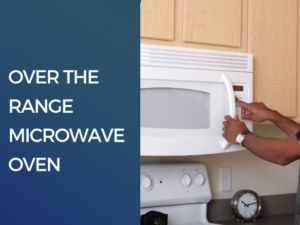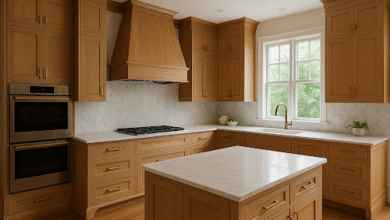What are the Different Types of Microwave Ovens

When most people think of a microwave oven, they imagine a small, box-like appliance that sits on the countertop and cooks food quickly. However, there are different types of microwave ovens available on the market, each with its own unique features. In this blog post, we will explore the different types of microwave ovens and discuss their benefits and drawbacks. So, whether you are in the market for your first microwave oven or are considering upgrading to a new model, read on for helpful information about the different types of microwaves available.
1. Countertop microwave ovens:

These are the most common type of microwaves and are the ones that people typically think of when they hear the term “microwave oven.” They are small, box-like appliances that sit on the countertop and cook food quickly by utilizing microwave technology. Most models have a variety of pre-programmed settings that allow you to cook different types of foods with the press of a button. As an added bonus, many models have extra features such as a child-safety lock, digital timers, and programmable cooking times.
The main benefit of countertop microwave ovens is their convenience they are easy to use and take up very little space. However, they do have a few drawbacks. For starters, countertop microwaves tend to be on the smaller side, so they may not have enough room to cook larger food items (such as a turkey or casserole). In addition, not all models are equipped with certain advanced features such as an inverter power control and sensor cooking–features that are typically offered on more expensive models.
2. Over-the-range microwave ovens:

These types of microwaves are larger than countertop models and are installed over the cooktop or range. They differ from regular countertop microwaves in several ways, including their controls and settings. The controls on an over-the-range microwave are generally easier to access and use than on a regular countertop model. In addition, they tend to have more pre-programmed settings and advanced features such as sensor cooking.
The main benefit of over-the-range microwaves is their versatility–they can be used for both cooking and reheating. However, they do have a few drawbacks. One of the biggest drawbacks is that they are usually more expensive than regular countertop models. In addition, they take up space on the countertop and require additional installation costs (such as making room for plumbing and electrical outlets).
3. Built-in microwave ovens:
These types of microwaves are installed into kitchen cabinetry, which means that they take up less space than regular countertop models. They are typically larger and more powerful than other types of microwaves, so they can not only heat small portions quickly but also cook large items such as casseroles or turkeys. In addition, built-in microwave ovens often feature advanced settings and features such as sensor cooking and an inverter power control.
The main benefit of built-in microwave ovens is that they are extremely convenient to use. For starters, they require less space on your countertop since they can be installed into cabinetry, which means that you won’t need to clear off your counters in order to use your microwave. Additionally, built-in models often have advanced settings and features that are not available on regular countertop or over-the-range microwave ovens.
4) Convection Microwaves:

While they may sound like a combination of the other types of microwaves, convection microwaves are actually quite different and have unique features. They work by combining microwave heating with an energy-efficient fan that circulates hot air throughout the oven cavity. This allows for food to be heated and cooked evenly throughout, which results in better tasting and more nutritious food.
The main benefit of convection microwaves is that they allow you to cook and reheat your food quickly and evenly. In addition, they are more energy efficient than regular countertop or over-the-range microwave ovens because the fan circulates air throughout the oven cavity and uses less power to heat up your food. However, one of the biggest drawbacks is that convection microwaves tend to be more expensive than other types of microwave ovens. Additionally, these types of microwaves may not be suitable for small kitchens because they require a larger space than regular countertop or over-the-range models.
Conclusion:
In conclusion, there are many different types of microwave ovens on the market today, each with its own benefits and drawbacks. Whether you are in the market for your first microwave oven or are considering upgrading to a new model, it is important to do your research and make sure you choose the right appliance for your needs. Remember that the most important factors to consider when choosing a microwave oven include its capabilities, size, convenience, and price. Happy shopping!




